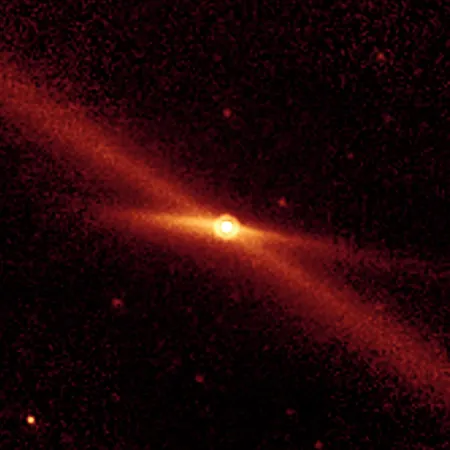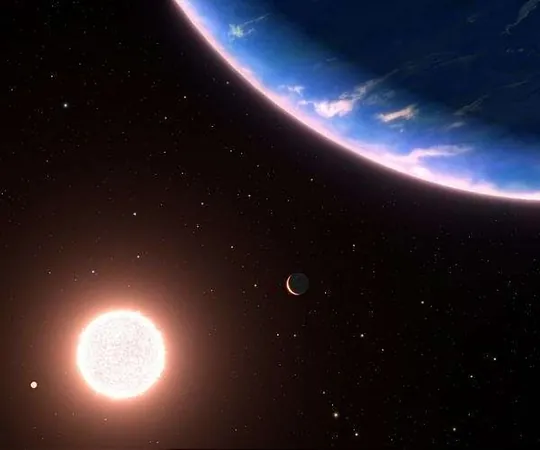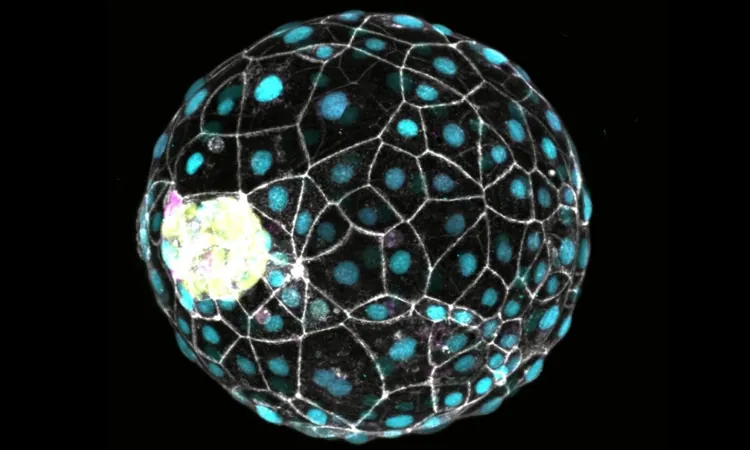
Breakthrough Study Reveals Good News About 'Doomsday' Asteroids!
2024-10-07
Author: John Tan
Introduction
Astronomers have exciting news that should ease your worries about potentially catastrophic asteroids near our planet. A recent study suggests that there are significantly fewer threats lurking than previously believed.
The Taurid Swarm
Using the powerful Zwicky Transient Facility (ZTF) telescope to study vast areas of the sky, a research team led by the University of Maryland has focused on a stream of space debris known as the Taurid swarm. This celestial phenomenon, thought to be remnants of a historically massive comet named Encke, produces spectacular meteor showers observable from Earth every October and November. Over the years, this swarm has drawn considerable attention from astronomers due to concerns that it might contain dangerous, hidden asteroids, but the existence of such threats was unconfirmed—until now.
The Research Findings
The team's groundbreaking findings were presented at the American Astronomical Society’s Division for Planetary Sciences annual meeting held on October 7, 2024. According to Quanzhi Ye, an assistant research scientist at UMD’s Department of Astronomy who led the project, the research took advantage of a unique opportunity when the swarm of asteroids came particularly close to Earth. This proximity enabled a more efficient investigation of objects that could endanger our planet. Ye noted, "Our findings indicate that the likelihood of a large asteroid impacting Earth from the Taurid swarm is considerably lower than we had previously thought, which is excellent news for planetary defense."
Previous Concerns
Previously, scientists had speculated that the Taurid swarm harbored a significant number of large, kilometer-sized rocks, remnants of an object possibly up to 100 kilometers (62 miles) in diameter. Such sizable asteroids could cause massive destruction, as evidenced by the infamous Chelyabinsk meteor, which injured over 1,600 people when it struck Russia in 2013. Even larger asteroids could lead to catastrophic extinction events, reminiscent of the asteroid that wiped out the dinosaurs over 66 million years ago.
New Findings
However, the new study indicates that only a handful—perhaps just nine to fourteen—of these large asteroids may actually exist within the Taurid swarm. Ye elaborated, "Our analysis suggests that the parent object responsible for creating this swarm was likely only about 10 kilometers in diameter, rather than a gigantic 100-kilometer creature. While we must maintain vigilance concerning asteroid impacts, we can breathe a little easier knowing these results."
Astrophysical Importance
Beyond mere asteroid monitoring, the Taurid swarm holds vital information about the evolution of our solar system and its celestial bodies. The connection to the comet Encke, one of the largest and dustiest short-period comets with an orbital period of only 3.3 years, adds depth to this research. Scientists believe Encke has fragmented significantly in the past and may continue to do so, which is essential for understanding how such bodies evolve over time.
Broader Implications
"Studying the Taurid swarm offers insights into the formation and fragmentation of celestial objects," Ye said. "This research has implications that extend beyond asteroid detection—it's crucial for enhancing our comprehension of the solar system."
Future Research and Conclusion
While the findings of this study are undoubtedly reassuring, Ye and his team emphasize the importance of sustained search efforts and enhanced detection technologies. With the ZTF telescope at their disposal, the researchers are scheduled to conduct follow-up observations during the next close approaches of the Taurid swarm in 2025 and 2026, further refining our understanding of these celestial dynamics.
"Exciting times lie ahead as we continue this vital research," Ye concluded, indicating that while threats may have diminished, the quest for knowledge in space remains as critical as ever. Keep your eyes to the skies—because the universe is full of surprises!




 Brasil (PT)
Brasil (PT)
 Canada (EN)
Canada (EN)
 Chile (ES)
Chile (ES)
 España (ES)
España (ES)
 France (FR)
France (FR)
 Hong Kong (EN)
Hong Kong (EN)
 Italia (IT)
Italia (IT)
 日本 (JA)
日本 (JA)
 Magyarország (HU)
Magyarország (HU)
 Norge (NO)
Norge (NO)
 Polska (PL)
Polska (PL)
 Schweiz (DE)
Schweiz (DE)
 Singapore (EN)
Singapore (EN)
 Sverige (SV)
Sverige (SV)
 Suomi (FI)
Suomi (FI)
 Türkiye (TR)
Türkiye (TR)